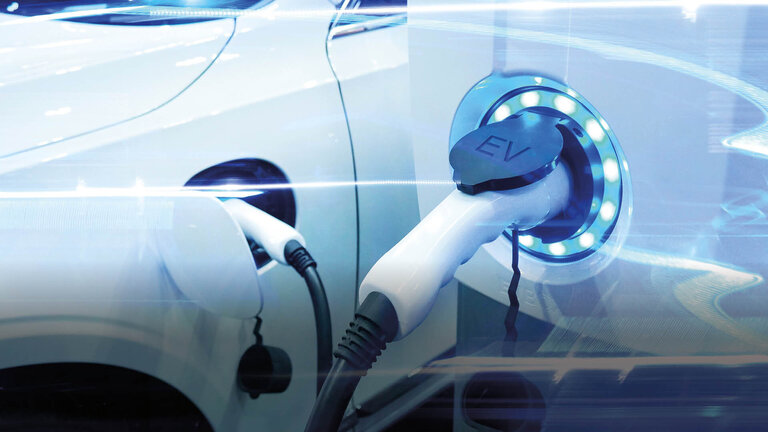Real estate of the future

To many, the future appears within arm’s reach. But for people who would like to drive electric vehicles (EVs), the opposite seems true.
There is incentive enough. In Germany, anyone who purchases an electric car receives a 4,000 euro subsidy, and is exempt from paying vehicle tax for ten years. Moreover, it is now easier to find charging stations when out and about: the public charging network is being extended by leaps and bounds. However, at home in the garage, it is a different story.
The future of personal transportation? Trapped by a conflict of interests
Headlines such as “Hans L. from Munich is not allowed to charge his electric vehicle in the shared underground parking,” accompany articles describing court rulings on disputes between landlords and tenants – and on occasion, conflicts amongst condominium owners themselves. Sometimes the only obstacle to the installation of electric vehicle supply equipment (EVSE) seems to be a lack of goodwill. But, upon closer inspection, it is more complicated than that. Costs need to be fairly allocated and correctly billed, and liability in the event of damage must be clearly defined.
Draft legislation that could remove these hurdles – for example, allowing charging stations to be installed against the will of other apartment owners – is currently being discussed. However, until it is enacted, EV aficionados cannot yet cite or make use of it. Legally, owners of investment properties have it easier.
“From a purely technical standpoint, the installation of a charging station is generally not a problem,” states Ralf Wagner, E-Mobility expert at Drees & Sommer. A wall charger (wallbox) is the recommended option. It should be connected to the parking spot’s owner’s meter in order to correctly allocate costs. The[MC1] charging station has its own insulated connection to the vehicle, and its own circuit breaker system. Wanger describes the process: “Installation is possible, but does require some planning as cables often cross multiple fire zones and a path must first be cleared.”
More complicated for existing buildings
Difficulties arise when multiple parties in a single existing building want to drive EVs. Typical domestic electricity connections are only designed to deliver a limited amount of power. Engineers do not expect everyone in a house to cook, bake, and do laundry at the same time. Charging an electric vehicle is a very different story. Wagner refers to it as “an ongoing load lasting many hours.” Specifications for domestic power supply systems do not take account of electric vehicles. Wagner states: “It is feasible, but somewhat complicated.”
The situation with new buildings is significantly easier. “I believe this is the most important task for developers,” explains Wagner. “We build houses to last forty years and longer. By then, almost all vehicle powertrains will be electrified.” The EU has also recognized this fact, and its directive 2018/844 mandates the installation of ducting infrastructure (conduits for electric cable) in residential buildings with more than ten parking spaces. Germany opposes this policy, arguing that there is an urgent need for new apartments and that the country cannot currently afford an explosion in costs of this kind.
An opportunity not to be missed
It is possible to just wait and see what happens. However, it would be wiser if developers took action early and provided EVSEs for all residential units. “We are already working on charging infrastructure concepts for multi-family dwellings and new residential projects,” explains Ralf Wagner, “and demand is rising.”
A charging point could soon be a key selling point for apartments. And developers and investors are becoming increasingly important players in the shift away from fossil fuels. Planners and decision-makers need to keep an eye on the rise of electric vehicles. The value of real estate will also be, in part, dependent on whether they support e-mobility. Or to put in another way: without innovative property design, the electric vehicle trend will simply not gain traction.


